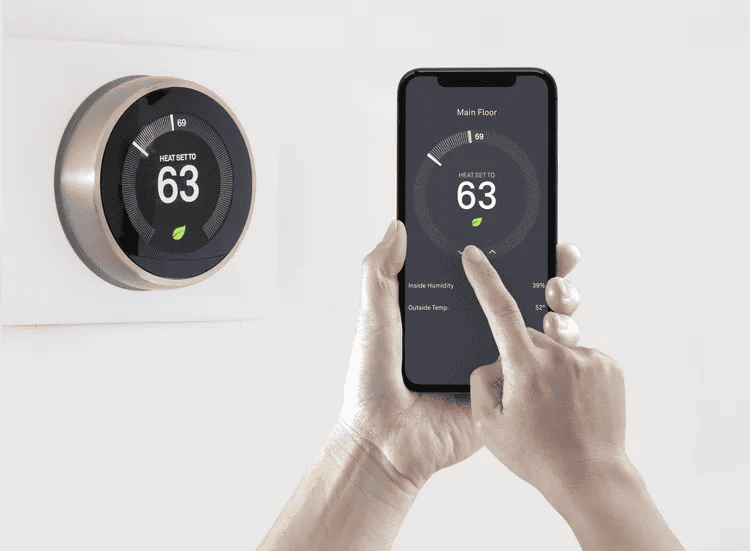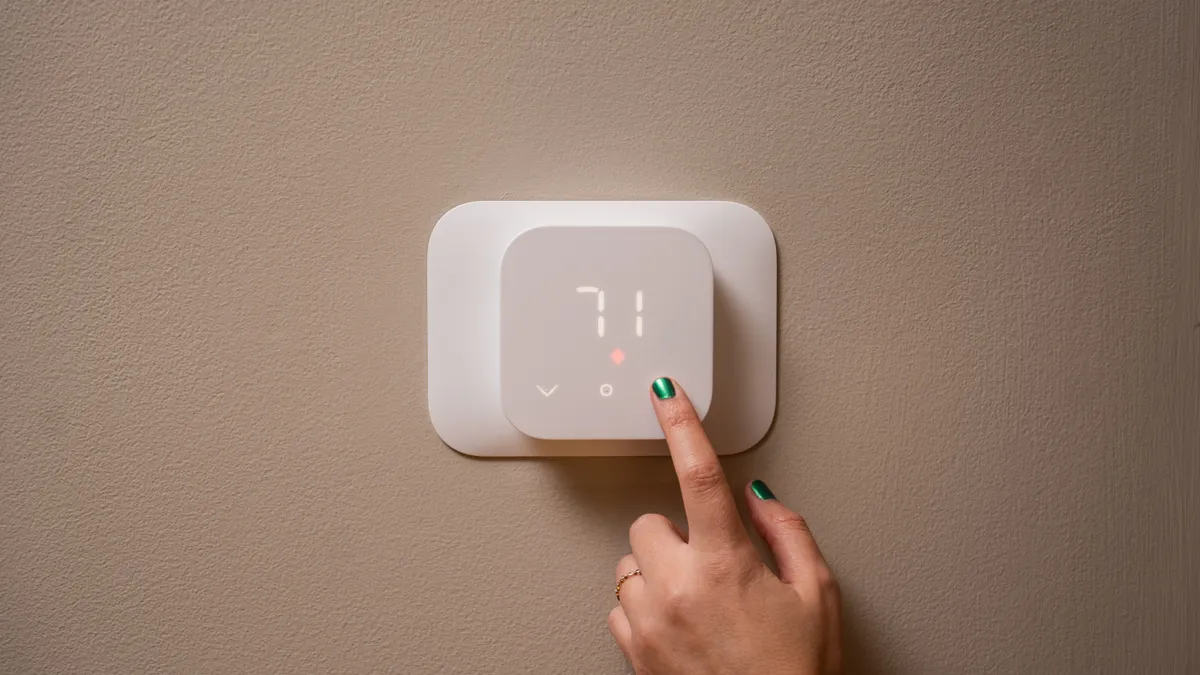Home comfort, especially in the context of HVAC (Heating, Ventilation, and Air Conditioning) systems and smart thermostats, is a vital component of modern living.
In an age where convenience and control are at the forefront of technological advancements, the ability to create a personalized and comfortable living space has never been more significant. HVAC systems and smart thermostats go hand in hand to not only maintain an ideal indoor climate but also to do so with unprecedented precision and energy efficiency.
The Evolution of Thermostats
For decades, traditional thermostats served as the primary control devices for HVAC systems in homes and businesses. These devices were relatively straightforward, allowing users to manually adjust the temperature settings in their living spaces. While they provided a basic level of control, they often lacked the sophistication and intelligence needed to optimize comfort and energy efficiency. This section will delve into the limitations of traditional thermostats and how they laid the groundwork for the emergence of smarter alternatives.
While they provided a basic level of control, they often lacked the sophistication and intelligence needed to optimize comfort and energy efficiency. This section will delve into the limitations of traditional thermostats and how they laid the groundwork for the emergence of smarter alternatives.
Introduction of Smart Thermostats
The introduction of smart thermostats marked a significant turning point in the world of home comfort and HVAC control. These innovative devices leverage cutting-edge technology to provide users with a level of control and automation that was previously unimaginable.
Smart thermostats are equipped with a range of features, including Wi-Fi connectivity, learning algorithms, and remote control capabilities. They can learn user preferences, adjust settings based on occupancy, and even integrate with other smart home systems. This section explores the key features and benefits of smart thermostats and how they are revolutionizing the way we manage our indoor environments.
The Impact of Smart Technology on Home HVAC
The integration of smart technology into HVAC systems has had a profound impact on home comfort and energy efficiency. Smart thermostats, in conjunction with advanced HVAC equipment, enable users to fine-tune temperature and humidity control, optimize energy usage, and reduce utility costs.
Moreover, these systems can be programmed to adapt to changing schedules and preferences, ensuring that occupants always enjoy a comfortable environment without unnecessary energy waste.

Benefits of Smart Thermostats
These thermostats offer a range of features and capabilities that enhance energy efficiency in home heating and cooling systems. This not only reduces environmental impact but also leads to cost savings for homeowners.
- Adaptive Learning: Smart thermostats are designed to learn user preferences and adapt heating and cooling schedules accordingly. By analyzing patterns and adjusting settings to optimize comfort without unnecessary energy consumption, they help reduce energy waste. For example, if a smart thermostat recognizes that you consistently lower the temperature at night, it will automatically make this adjustment, ensuring comfort while minimizing energy usage.
- Remote Control: One of the standout features of smart thermostats is their ability to be controlled remotely through mobile apps or web interfaces. This feature allows homeowners to adjust settings from anywhere, ensuring that the HVAC system is not running unnecessarily when no one is home. By remotely turning the system on or off or making temperature adjustments, users can conserve energy and reduce their carbon footprint.
Cost Savings
Smart thermostats not only contribute to energy efficiency but also result in tangible cost savings for homeowners, making them a wise investment.
- Reduced Energy Consumption: By optimizing heating and cooling patterns and ensuring the HVAC system operates only when necessary, smart thermostats reduce energy consumption. This translates to lower energy bills over time. Homeowners can enjoy increased comfort while simultaneously reducing their utility expenses.
- Utility Bill Reduction: The cumulative effect of energy efficiency and reduced energy consumption is a noticeable reduction in utility bills. Smart thermostats enable users to monitor their energy usage and make informed decisions to further cut costs. Over time, these savings can be substantial, offsetting the initial cost of the thermostat and leading to long-term financial benefits.
Improved Comfort
Home comfort is enhanced through customization and remote monitoring, ensuring that your living space is always at the desired temperature and ambiance.
- Customized Scheduling: Smart thermostats enable users to create customized heating and cooling schedules based on their daily routines and preferences. This personalization ensures that the home is at the ideal temperature when you wake up, return home, or go to sleep. Whether it’s setting different temperatures for weekdays and weekends or accommodating irregular schedules, smart thermostats make it easy to maintain comfort in your living space.
- Remote Monitoring: The ability to monitor and control your HVAC system remotely is a game-changer for home comfort. Whether you’re at work, on vacation, or simply lounging in another room, you can adjust the thermostat settings using a smartphone app or a web interface. This feature ensures that your home is comfortable before you arrive and helps you avoid wasting energy when no one is present.
Environmental Impact
Positive environmental impact also occurs by reducing carbon emissions and promoting sustainability when using these types of thermostats.
- Reduced Carbon Footprint: One of the most significant environmental benefits of smart thermostats is their role in reducing carbon emissions. By optimizing energy usage, avoiding unnecessary heating or cooling, and learning to operate efficiently, these devices help lower the carbon footprint of HVAC systems. This reduction in greenhouse gas emissions is an important step toward mitigating the impact of climate change.
- Sustainability: The promotion of sustainability is a key aspect of smart thermostat technology. By encouraging energy efficiency and enabling users to make eco-conscious choices, these devices align with broader sustainability goals. Smart thermostats are part of the larger movement to create more sustainable and energy-efficient homes, reducing resource consumption and promoting a greener future.
How Smart Thermostats Work
These thermostats operate by utilizing a variety of sensors to collect data about the environment. These sensors typically include temperature, humidity, and occupancy sensors. The temperature sensor monitors the current room temperature, while the humidity sensor assesses the moisture levels.
Additionally, occupancy sensors detect whether there are people present in the space. These sensors continuously gather data to provide a comprehensive understanding of the indoor conditions.
Connectivity to Smart Devices
Smart thermostats are designed to connect to various smart devices, such as smartphones, tablets, and voice assistants, through Wi-Fi or Bluetooth. This connectivity allows users to remotely control and monitor their HVAC systems.
Users can adjust temperature settings, create schedules, and receive real-time information about their home’s climate conditions using a smartphone app or a web-based interface. Integration with voice assistants like Amazon Alexa or Google Assistant enables voice commands for thermostat control.
Learning Algorithms
One of the key features of smart thermostats is their ability to employ learning algorithms. These algorithms analyze the data collected by the sensors, user interactions, and external factors like weather forecasts.
Over time, the thermostat “learns” the preferences and routines of the occupants. For instance, if the thermostat detects that the house is empty during certain hours of the day, it can automatically adjust the temperature to save energy. These algorithms continuously adapt to optimize comfort and energy efficiency.
User-Friendly Interfaces
Most if not all of these thermostats are equipped with user-friendly interfaces that make it easy for users to interact with the device. Most smart thermostats have touchscreens for on-device control, allowing users to manually adjust settings. Additionally, they offer smartphone apps with intuitive interfaces for remote control.
Users can create heating and cooling schedules, set temperature limits, and receive alerts or recommendations based on their energy usage. Some devices also provide energy reports, helping users track their consumption and identify areas for improvement.
Popular Smart Thermostat Brands and Models
- Nest Thermostat: The Nest Thermostat, developed by Google’s Nest Labs, is a top-notch smart thermostat known for its sleek design and advanced features. You can find more information on the official Nest website: Nest Thermostat
- Ecobee SmartThermostat: The Ecobee SmartThermostat is highly regarded for its compatibility with various smart home ecosystems and remote sensor capabilities. To explore its features and specifications, visit the official Ecobee website: Ecobee Smart Thermostat
- Honeywell Home T9: The Honeywell Home T9 is a dependable choice for those seeking a reliable smart thermostat with intuitive controls. For more details on this model, visit the Honeywell website: Honeywell Home T9
Comparison of Features
To compare the features of these popular smart thermostat brands and models, you can refer to comprehensive reviews and comparisons on reputable tech and home improvement websites. Some well-regarded sources for such comparisons include CNET, PCMag, and Wirecutter. Here are a few links to help you get started:
These resources will provide in-depth insights into the features, pros, and cons of various smart thermostat models, helping you make an informed decision based on your specific needs and preferences.
Smart thermostats have revolutionized the way we control our home climates. Their benefits are manifold, encompassing energy efficiency, cost savings, and improved comfort. These devices employ adaptive learning, remote control, and sensor technology to ensure that your home environment is always just the way you like it, without unnecessary energy waste. The ability to monitor and customize settings through user-friendly interfaces and seamless integration with other smart devices makes them an invaluable addition to any modern home.
Contact us at Optimized Air if you need assistance with a smart thermostat installation, repair, or configuration.



